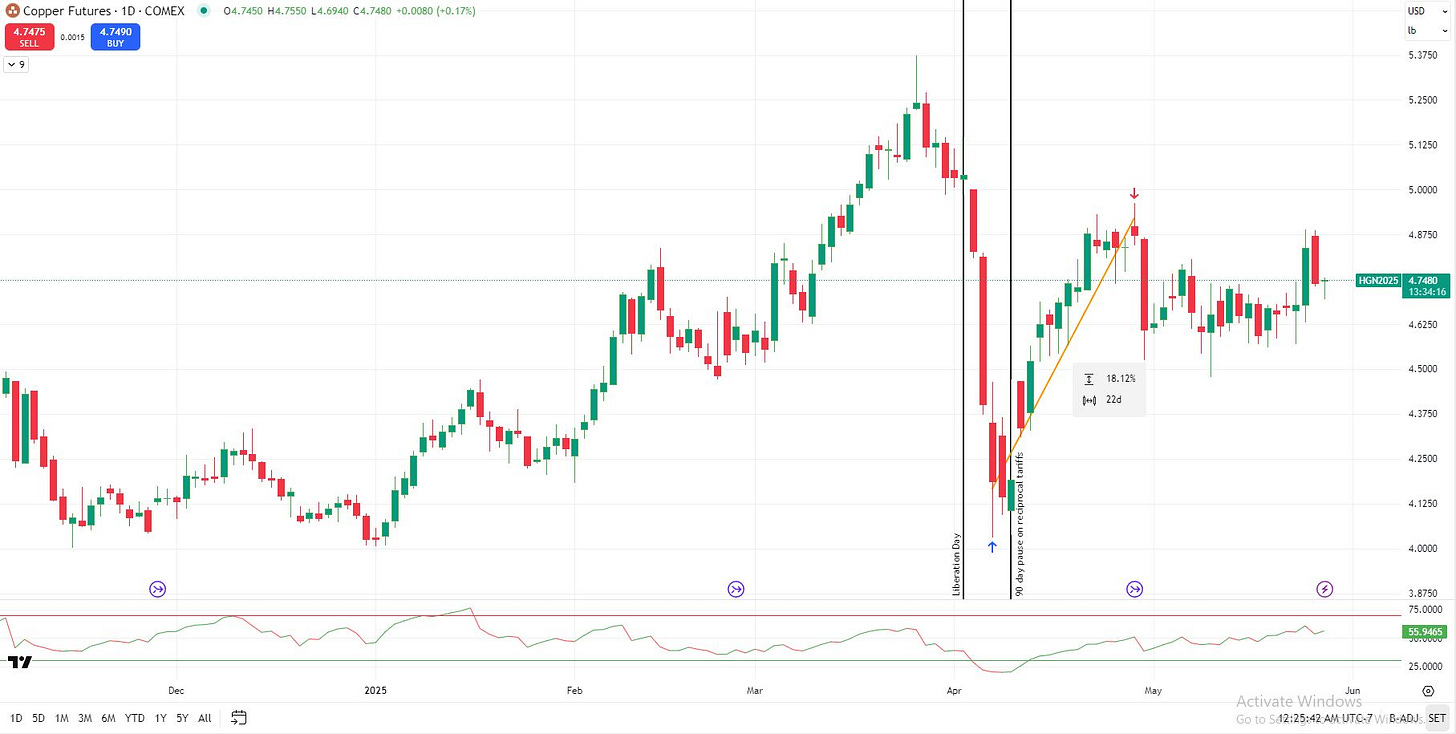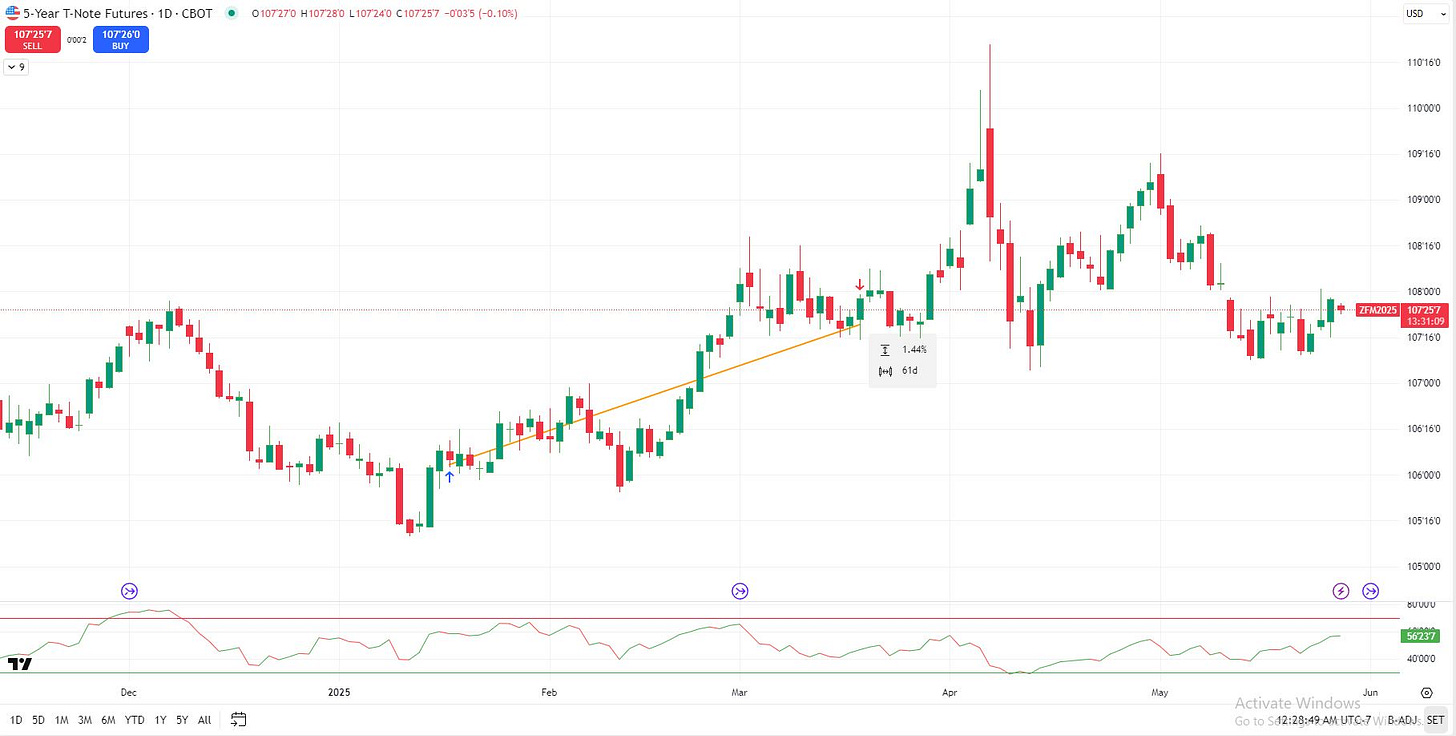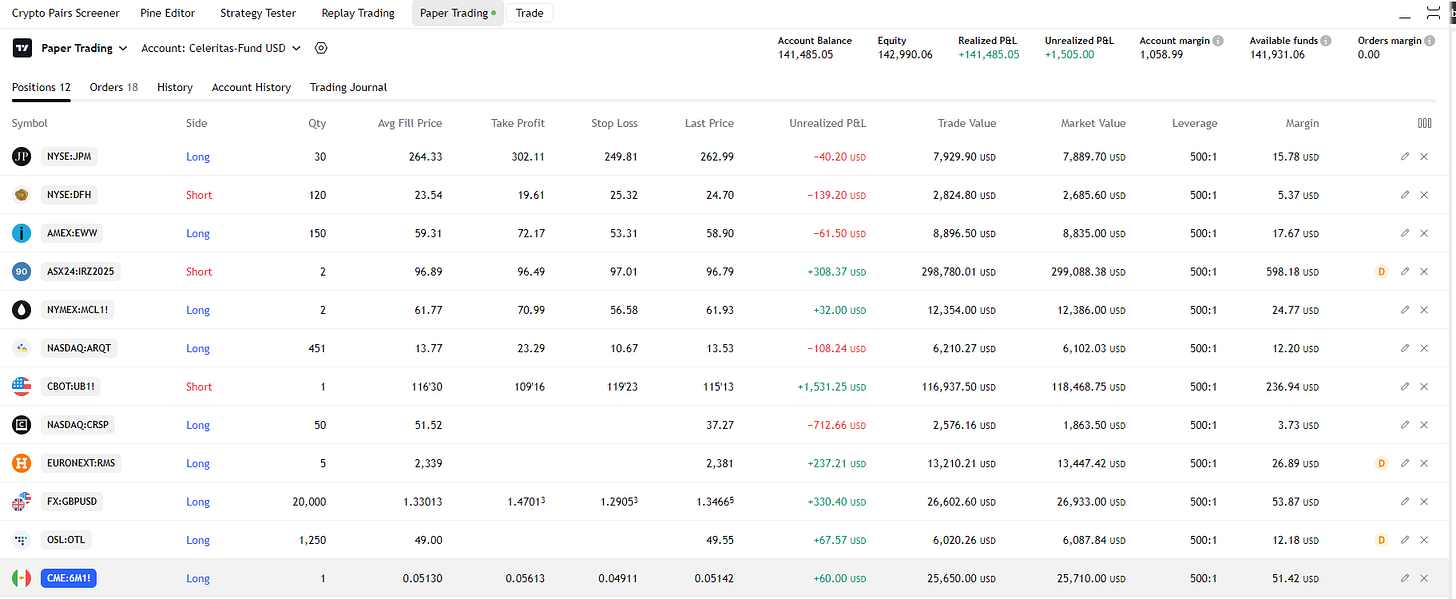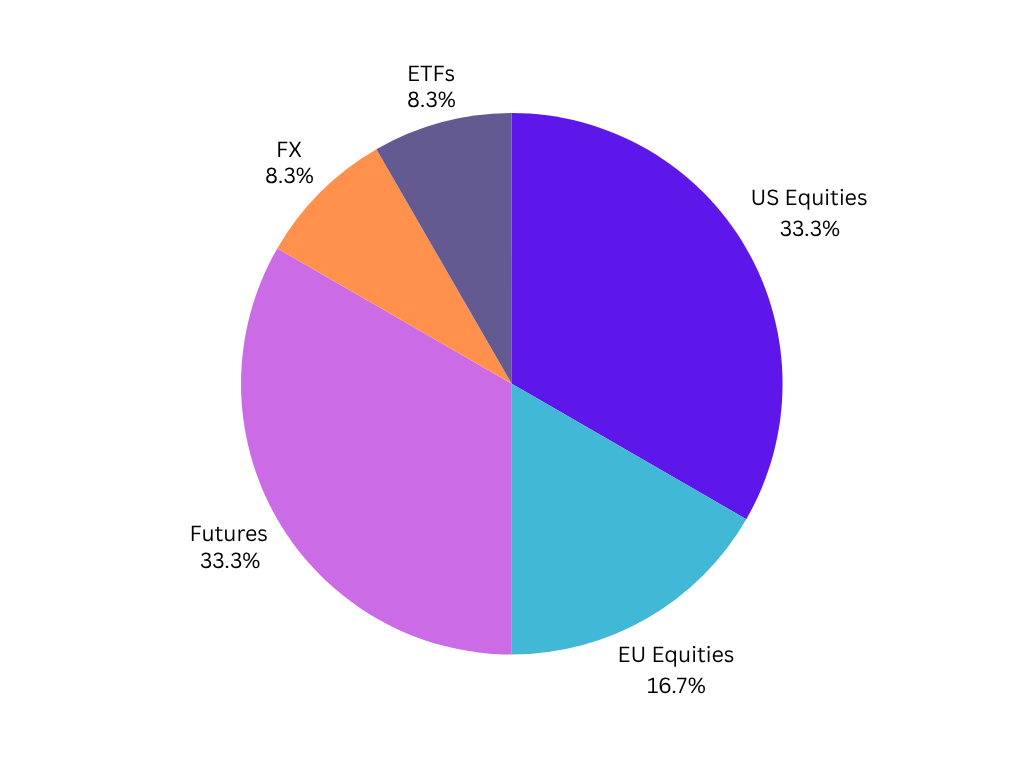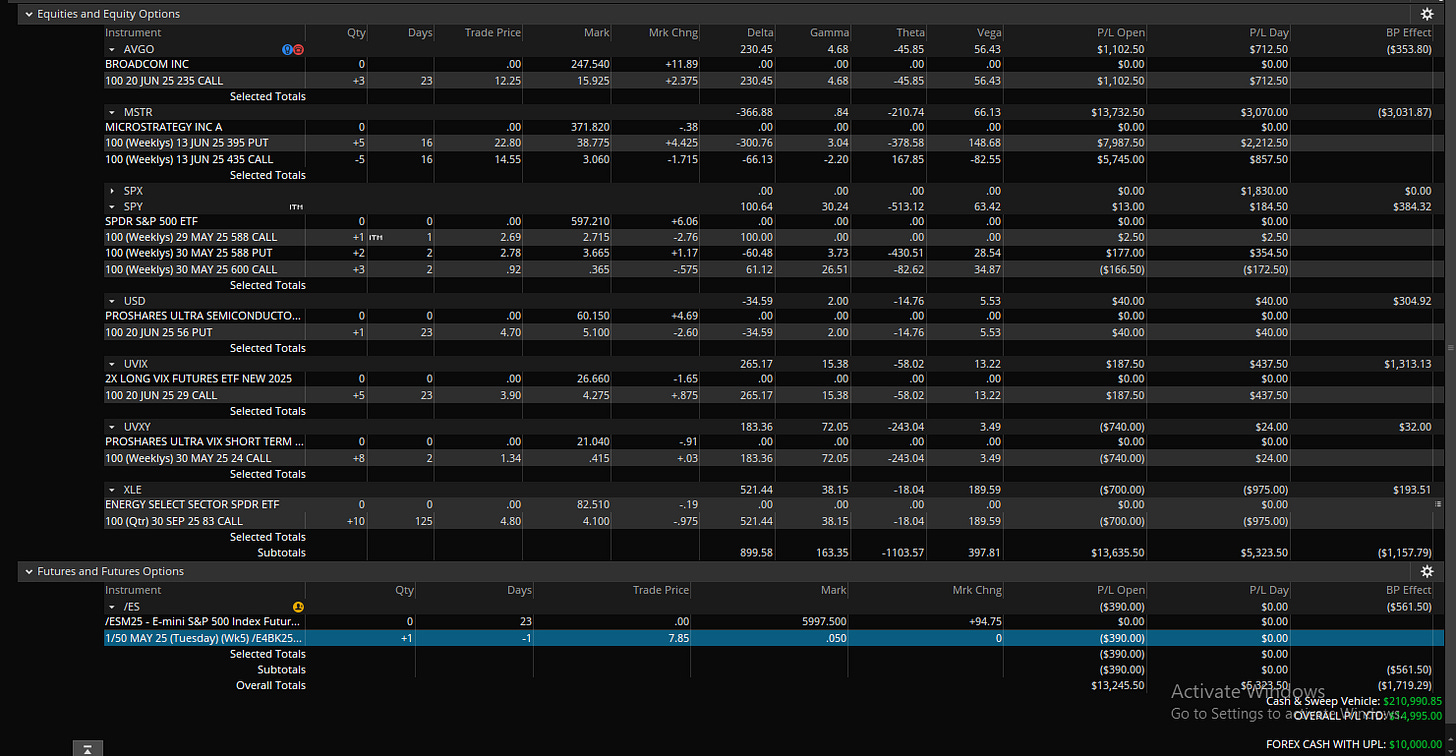Introducing Options to the Celeritas Fund, Portfolio Review #3
Adding a new way to get leverage for the Celeritas Fund
Welcome back to Celeritas Capital!
First, I want to sincerely apologize for my absence this year—and for the lack of posts throughout 2024. My health took an unexpected turn, which significantly limited my ability to write and stay active in the markets. Earlier this year, my condition worsened, and I had to step away from trading—and most things—for several months. I’m incredibly grateful to be back and truly appreciate everyone who stuck with Celeritas Capital. Your continued support means a lot.
It’s been a while since we’ve updated readers on the performance of the Celeritas Fund. As you may have gathered from the title, we’re now adding an options portfolio. Since TradingView doesn’t support options trading, I’ll be using ThinkorSwim for this part of the strategy. The starting balance for the options account is $100,000.
Going forward, the TradingView and ThinkorSwim portfolios will be presented separately in our fund reviews. The original TradingView paper trading account will now be referred to as the “Main Fund”, which will feature longer holding periods and a focus on macro-driven trades. The new options portfolio will be called the “Options Fund”, and it will focus on shorter-term, more tactical trades with less emphasis on macro themes.
Main Fund Performance:
I’ve switched up the chart we are using I thought showing of percentage would be more inline with standards. (We are working on upgrading our graphics like charts currently. If you have any experience creating amazing looking charts send me a message)
As you can see above, the Celeritas Main Fund is performing quite well, with a current return of 42.99%. Since the fund’s inception, the S&P 500 has returned only 20.98%, making our performance more than double that benchmark.
Although my health was my top priority this year and limited my ability to trade actively, I was still able to capture a significant move in copper—more on that shortly.
Reviewing Trades:
Since I’ve unintentionally been neglecting updates on the Celeritas Main Fund, I won’t be posting every trade in this update. (If you'd like to review the trades in detail, feel free to message me.) I’ll return to posting all trades in the next Celeritas Fund Review.
Now, let’s break down my long copper futures trade.
I entered this trade for several reasons. A few days after Liberation Day, nearly everything was down—including copper. Even before then, I had been eyeing the $4.20–$4.00 range as a potential buying zone. When prices dipped into that level, I was ready to act.
What ultimately convinced me to pull the trigger was a shift in my outlook on the tariff policy. It became clear to me that the current administration couldn’t fully commit to the original tariff plan. Yields had surged, and the market had dropped faster than Elon Musk’s rocket on May 27th, 2025. My view at the time was that some form of tariff softening was likely.
So, on April 7th, I went long copper via futures contracts, entering at 4.1660 with a position size of one contract. Just two days later, on April 9th, the administration announced a 90-day pause on any additional tariffs beyond the base 10% rate.
Boom—thesis confirmed. The trade paid off.
The next trade to review is a long position in the 5-Year U.S. Treasury Bond Futures contract (ZF).
The reasoning behind this trade was twofold: First, my momentum model issued a long signal, and second, I believed that bond yields had peaked in January. Admittedly, I didn’t catch the signal right away—I noticed the model had triggered a day after the fact—but I still entered the trade.
While I could’ve captured more upside had I been more attentive to the markets at the time, I’m still satisfied with how this trade played out, all things considered.
The final trade I want to highlight is a Fed Funds futures trade.
Following Liberation Day, the market began aggressively pricing in significant rate cuts in the July 2025 Fed Funds contract (ZQN2025). At the peak, the contract was implying three cuts—or 72 basis points—in just three meetings. In my view, this was highly improbable. I didn’t believe the tariff situation alone would be enough to force the Fed’s hand so quickly.
While I missed the opportunity to fade the extremes, I still entered a short position at 96.130. I later exited at 95.715, locking in a profit of $1,729.30.
Current Portfolio Holdings:
As shown above in Figure 5, these are the current holdings of the Main Fund. At present, we’ve deployed capital across several asset classes (Figure 6). The two largest allocations are in U.S. equities and futures, with four positions in each (Figure 6).
The fund also holds two European-listed stocks, representing 16.7% of total holdings, as shown in Figure 6. Additionally, we have one U.S.-listed ETF and one FX position, each accounting for 8.3% of the portfolio. Altogether, the Main Fund currently holds 12 positions.
Option Portfolio Holdings:
Option portfolio is doing decent so far, we will see what’s to come.
Conclusion:
More trades for both funds coming soon. I will try my best to send when I open a new trade in the chat.
Any feedback is always welcome, feel free to leave a comment or send me a message. Thank you so much for reading!
DISCLAIMER: We are not Financial Advisors, and all information presented is for educational purposes ONLY. Financial markets can be highly volatile, so good risk management is a must.



